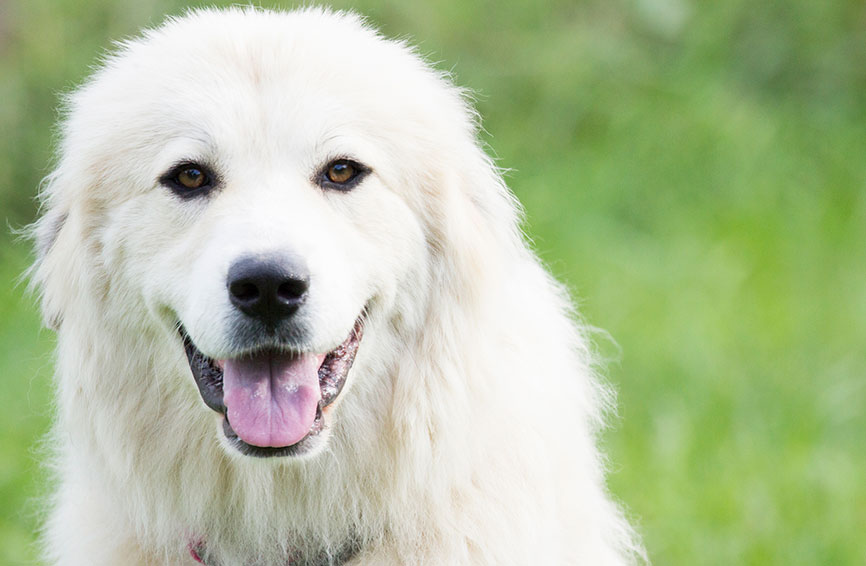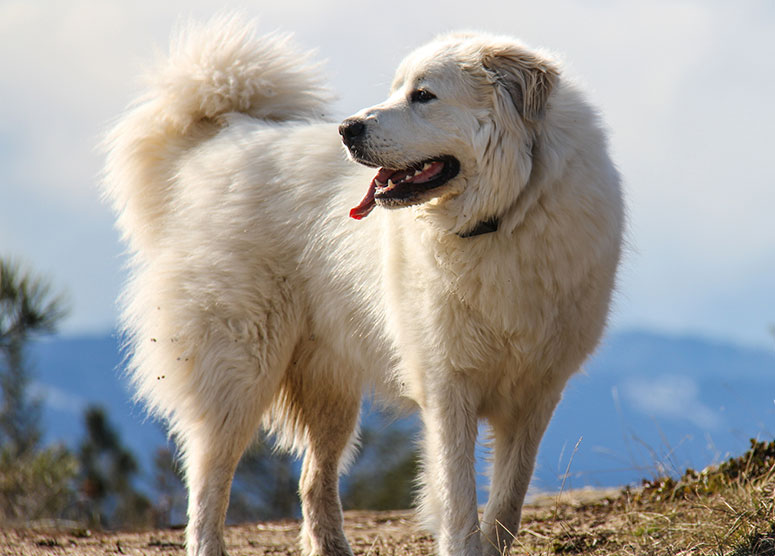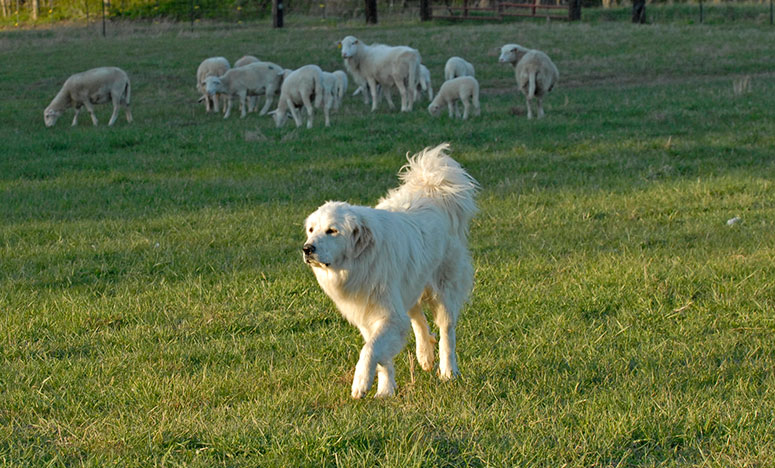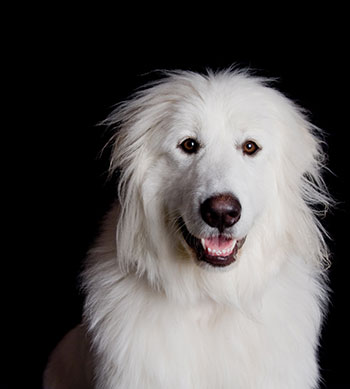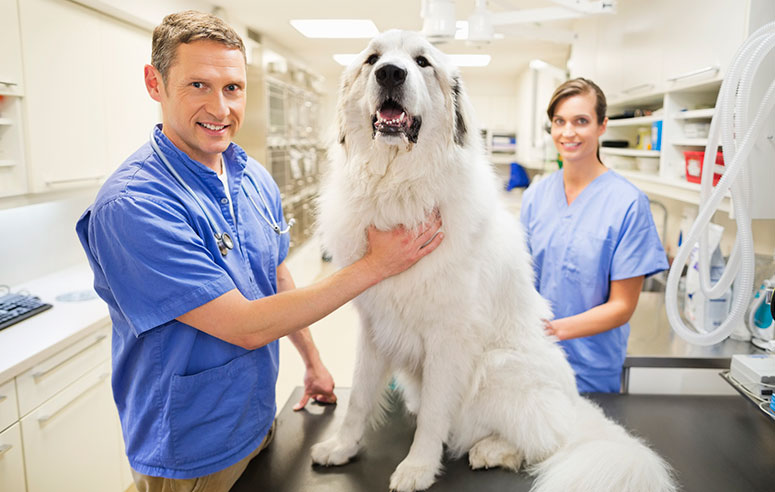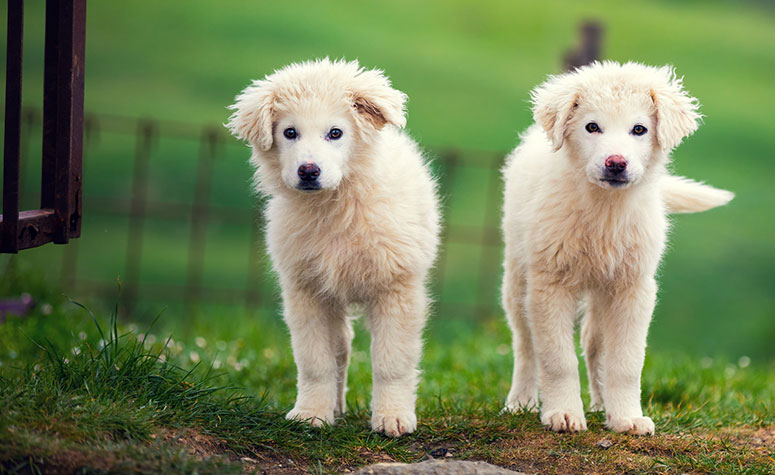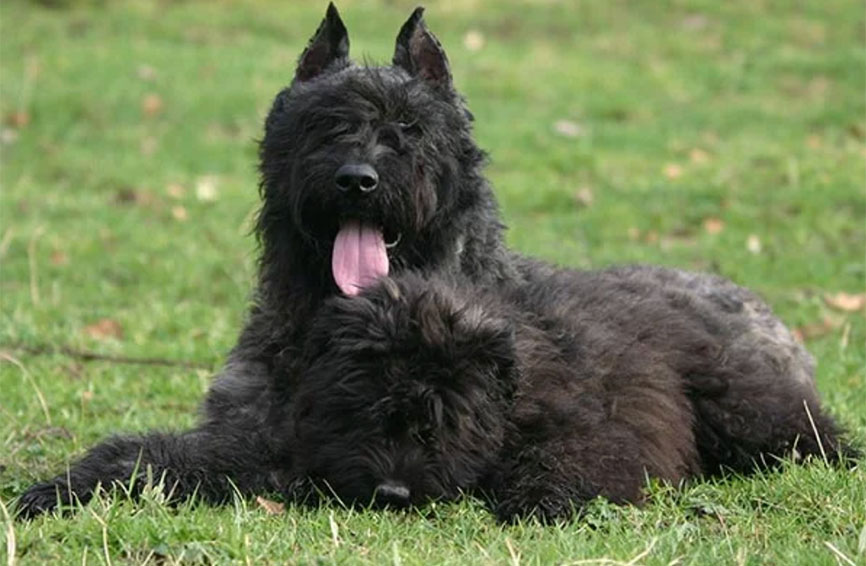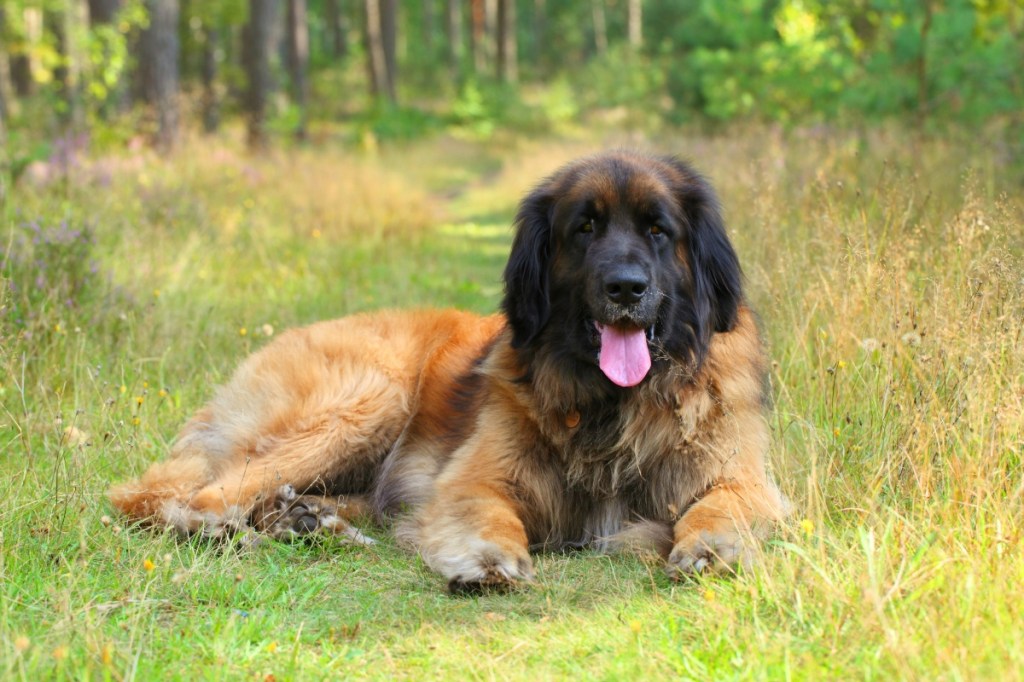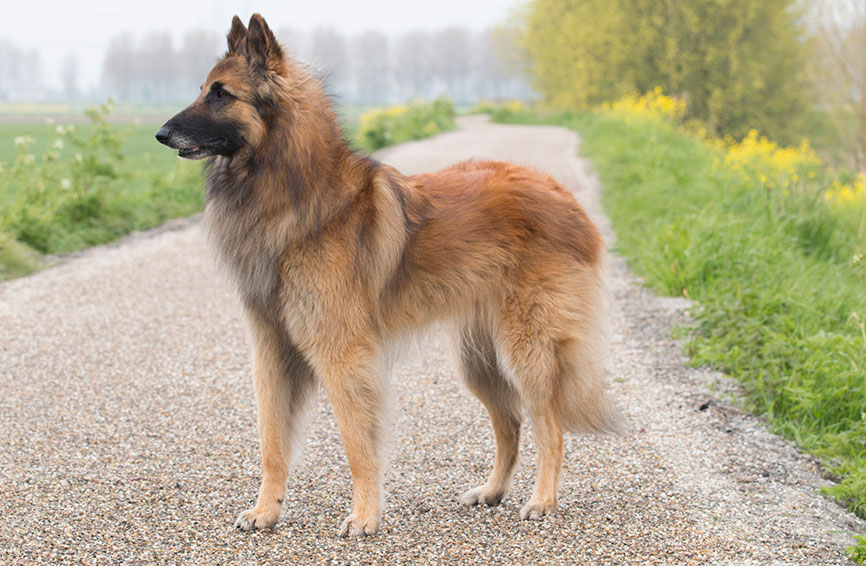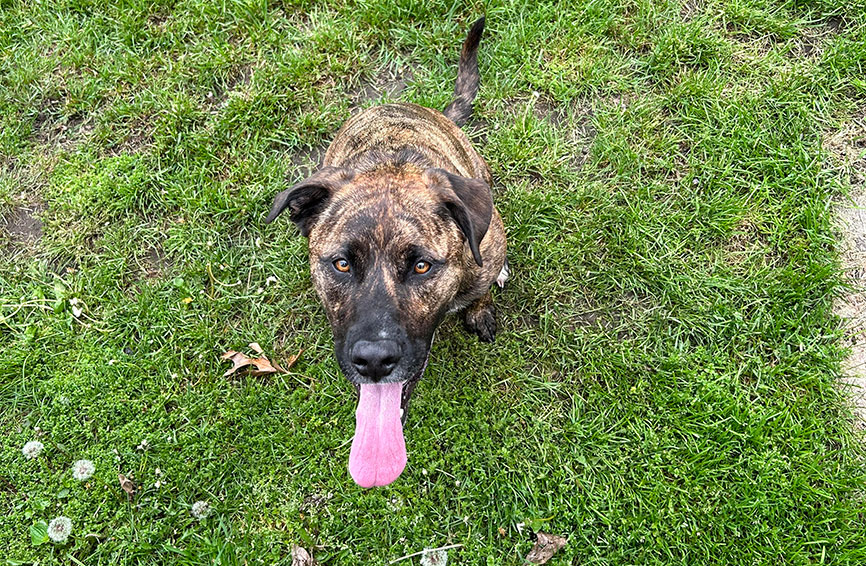Table of Contents
Introduction to Great Pyrenees
Known for being intelligent, calm, and patient dogs, the Great Pyrenees is a Working Group breed and a large type of dog. These dogs have thick coats and are very powerful, as they were originally bred to deter wolves from attacking sheep in snowy, mountainous landscapes. Great Pyrenees dogs are excellent home and family guardians but also mellow companions that have almost a Zen-like quality.
They are beautiful dogs that are easy to fall in love with and be impressed by because of their majestic and elegant demeanor. Are you searching for the perfect family dog and curious about the Great Pyrenees? Read on to learn more in our Healthy Paws breed guide!
Size of Great Pyrenees
One of the most defining characteristics of the Great Pyrenees is its size. These large dogs continue growing and filling out in weight until they are 18 months to two years old. However, diet, exercise, and genetics all play a part in your dog’s final adult size once fully grown.
Below is a chart describing how big you can expect your Great Pyrenees to get as the dog grows from puppyhood to adulthood:
| Weight Chart | 3 months | 6 months | 9 months | 12 months | 24 months |
| Male Great Pyrenees | 30 to 40 lbs. | 70 to 80 lbs. | 85 to 95 lbs. | 100 to 115 lbs. | 100 to 125 lbs. |
| Female Great Pyrenees | 25 to 35 lbs. | 50 to 60 lbs. | 65 to 75 lbs. | 80 to 95 lbs. | 85 to 100 lbs. |
Characteristics of Great Pyrenees
The Great Pyrenees is a working dog that has been used for guarding, rescue work, and therapy. These intelligent dogs are used to being on their own (compared to other dog breeds) and intelligent enough to figure out many things independently. They are devoted dogs that love their family members and make people feel safe and protected when they are around.
When socialized early, they do well around children, senior citizens, and people with mobility issues. A Great Pyrenees prefers cool weather over hot weather and is quite sensitive to sounds and emotions.
As you get to know your Great Pyrenees’ personality, here’s what you can expect based on their breed characteristics:
| Breed Characteristic | Level (High, Medium, Low) |
| Affectionate with People | Medium |
| Good with Kids | Medium |
| Good with Pets | Medium |
| Need for Exercise | Medium |
| Energy Level | Medium |
| Intelligence Level | High |
| Able to Be Trained | Medium |
| Amount of Barking | Medium |
| Amount of Shedding | Medium |
History of Great Pyrenees
This breed gets its name from the Pyrenees Mountains, which form a natural border between France and Spain. The dogs were bred hundreds of years ago to work as sheepherders in the mountains. However, it is believed that the breed originated from Siberia or Central Asia before migrating to Europe.
These dogs excelled at keeping wolves, bears, and other predators away from the sheep. They exhibited great patience while sitting in cold mountainous areas for days as they kept guard over the sheep and became courageous and responsive in an instant if a risk arose.
The Great Pyrenees was the Royal Dog of France in King Louis XIV’s court in the 17th century after the dogs proved their guarding abilities to royalty. This represented a shift in the dog’s status from being a dog of peasants to a dog of nobility. The Great Pyrenees was first brought to the U.S. in 1824 by General Lafayette as a gift for his friend.
Great Pyrenees standard information
The Great Pyrenees Club of America provides detailed information about how this breed should look, act, and move. This is useful information if you are interested in purchasing a purebred Great Pyrenees or entering your dog into a show or competition.
For example, the general appearance of a Great Pyrenees includes a primarily white coat, intelligent expression, and large size. Here is an overview of the breed standard information for Great Pyrenees:
Head:
- Not heavy and wedge-shaped
- Medium-sized eyes that are almond-shaped
- Small to medium ears that are V-shaped with rounded tips
- Scissor bite preferred, but level bite is acceptable
Neck, Topline, Body:
- Muscular neck of minimum length
- Backline is level
- Chest is moderately broad
- Tailbones are sufficient length to reach the hock
Forequarters:
- Legs provide balance with the frame
- Strong and flexible front pasterns
- Rounded and close-cupped front feet
- Well-padded and well-arched toes
Hindquarters:
- Upper thighs are strongly muscular and extend from the pelvis at right angles
- Rear feet toe out slightly
- Toes are otherwise similar to the front toes
Coat:
- Weather-resistant double coat with a coarse outer coat
- Dense, fine, and wooly undercoat
- Longer hair on the tail forms a plume
- Feathering on the back of the front legs and back of the thighs
Color:
- Mostly white with markings of gray, reddish brown, tan, or badger acceptable
- Undercoat can be white or shaded
Gait:
- Smooth and elegant movement
- Well-balanced stride with good reach and strong drive
- Legs move towards the center as speed increases
Caring for Great Pyrenees
Great Pyrenees dogs are not ideal for apartment living and are not the best dogs for first-time pet parents. They tolerate being alone better than with other dogs but are also quite sensitive. They are all-around friendly dogs with moderate exercise needs, so you won’t necessarily have to devote as much time to being active as you would with some other large breeds.
Here are some general tips for taking the best care of a Great Pyrenees:
Best Living Environments:
- Cool climates rather than hot ones
- Houses with fenced yards
- No apartments
Type of Exercise:
- About 30 minutes of exercise per day
- Walks around the neighborhood
- Running around in a fenced yard
- Hikes during cool weather
Mental Enrichment:
- Playtime with toys in the yard
- Training events and competitions for stimulation
Training Strategies:
- Crate training can be beneficial for a peaceful retreat
- Crate time should not exceed more than a few hours during the day
- Leash training prevents being pulled by such a large dog
Grooming Tips:
- Average to heavy shedders
- Expect white fur on your clothes and furniture
- Easy to groom, with about 30 minutes of grooming per week
- Little care is required other than brushing
- Bathe every couple of months
- Check ears, trim nails, and brush teeth regularly
Common health problems of Great Pyrenees
The average lifespan of a Great Pyrenees is 10 to 12 years. These are generally healthy dogs but are susceptible to various health conditions as they get older, such as eye diseases, neurological disorders, knee problems, and cancer.
These are some of the most common health issues that arise with Great Pyrenees:
- Gastric dilatation and volvulus (bloat)
- Hip dysplasia
- Elbow dysplasia
- Patellar luxation
- Addison’s disease (underactive adrenal glands)
- Entropion (eyelid condition)
- Cataracts
Diet and nutrition for Great Pyrenees
A fully grown Great Pyrenees needs between four and six cups of dry dog food per day. Since large dogs like the Great Pyrenees is prone to bloat, it is important not to feed your dog right before or right after exercise. Other strategies to prevent bloat include feeding multiple small meals per day and using slow feeder bowls.
Where to adopt or purchase Great Pyrenees
The Great Pyrenees Club of America may be able to assist you if you are looking for a purebred dog to purchase. There are also many rescue organizations that can connect you with a Great Pyrenees in need of a loving home. Many of these groups are local and regional, such as the Mile High Great Pyrenees Club Rescue, Great Pyrenees Club of Puget Sound, and Great Pyrenees Rescue of Greater Chicago.
Related breeds
If a large, gentle, and calm dog sounds exactly what you have been looking for, you might also want to learn about similar breeds before setting on a Great Pyrenees. Here are some other breeds to consider:
- Kuvasz
- Pyrenean mastiff
- Braque Francais Pyrenean
- Saint Bernard
- Tibetan mastiff
- Bernese mountain dog
- Newfoundland
Pet insurance for Great Pyrenees
Healthy Paws offers pet insurance for Great Pyrenees dogs so that you can take the very best care of this breed’s health from puppyhood to senior age. When you sign your Great Pyrenees up for a Healthy Paws plan, you’ll have peace of mind that you can also provide your dog with the medical care necessary when an accident or illness strikes. Our plan covers genetic and hereditary conditions, breed-specific conditions, alternative care, and more to help you make the most of every day with your gentle giant.
Visit our quote page to see what a pet insurance plan would cost for your Great Pyrenees and to take the next step in this important decision for your dog’s health. If you have any questions about how pet insurance works, we are here to provide answers – just give us a call at 855-898-8991.
